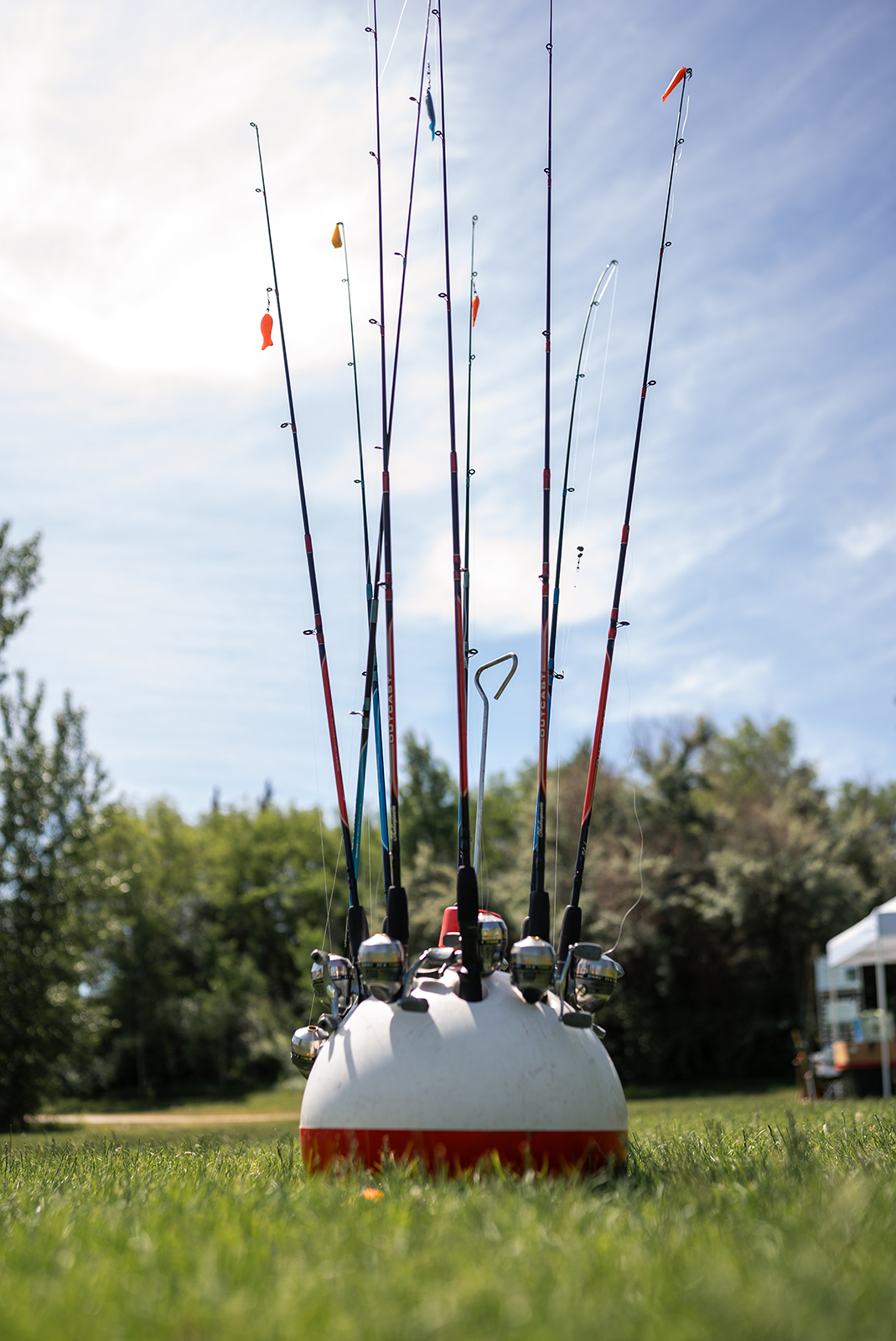Celebrating 75 Years of Anglers’ Contributions to Conservation
By Craig Springer
Kerdunk. That’s the sound of a floating crank bait landing on the smooth, glassy water of a Virginia lake at daybreak. The sharp, toasted-orange first light of day bathes the concentric rings that ripple outward from your first few twitches of the lure. The enticements draw no response from the object of your affections. Your presence stirs up a red-winged blackbird singing a flute-like gurg-a-lee from the cattails.
But anglers are ever the optimists. A few pedal clicks and baritone burrs of your trolling motor turns you nearer to a known underwater ledge. You know it’s there because you have felt it before, braille-like, drawing lipped lures over the lake bottom to the bow of your boat.
And then it happens. You feel a momentary halt—a strike—transmuted to your forearm and you instinctually, like a tense spring, set the hook and pull on what feels like at first a small resisting sack of potatoes.
The rasp of a greenish-chrome 3-pound largemouth bass’s teeth on your thumb is impressive. With a parting splash of its tail and dart to deep dark water, all of it shapes memories and morals. And to make it all the better, you are participating in and funding conservation.
Whether it’s catch-and-release or hook-and-cook, fishing is conservation—and has been for 75 years—codified in federal law with a hook in Virginia history. The Dingell-Johnson Sport Fish Restoration Act became law on August 9, 1950. In the vernacular, it’s been called “Federal Aid,” and “Dingell-Johnson,” and you might notice signage at a boat ramp or other public access, noting that the area exists thanks to “Sport Fish Restoration.”
That’s where you come in. Sport Fish Restoration is a partnership between the tackle industry, state fish and wildlife management agencies, anglers and boaters, and the U.S. Fish and Wildlife Service (USFWS). The tackle makers or importers of fishing tackle, be it a wholesaler or distributor, pay an excise tax to the United States Treasury on the first sale of their goods. Then every year, USFWS apportions those taxes to state fish and wildlife agencies for fisheries research, management, education, boater and angler access, and land purchases. Motorboat fuels are also taxed. The amount of funds going to the state agencies is no small change, and represents the majority of funding for the Virginia Department of Wildlife Resources (DWR’s) fisheries program.

Purchases of fishing equipment help fund the work of fisheries divisions at DWR and other state agencies, thanks to the Dingell-Johnson Sport Fish Restoration Act.
“We couldn’t do our job without Sport Fish Restoration dollars,” said Michael Bednarski, Chief of Fisheries for DWR. “The amount we get is substantial—about $3.5 million a year coming from the excise taxes on fishing tackle and boat fuel. I really believe in it.”
Sport Fish Restoration dollars buy technical gear, gasoline, boats, nets—and expertise—for DWR.
“We have 85 staff statewide managing cold-water streams, warm-water lakes, and nine fish hatcheries—all with cutting-edge skills in fisheries management that essentially connect fish and people,” said Bednarski.
John Crews, avid angler and owner of Salem, Virginia-based Missile Baits is another “believer.” His company pays the Sport Fish Restoration excise tax on its array of soft plastic lures.
“My employees that fish know what the excise tax goes toward, for sure. We all support protecting our rights to fish and conserving our fisheries,” said Crews. “With how it supports and preserves fishing, it definitely gives me a sense of pride to pay the tax.”
Crews’ fellow Virginians should be proud. The Sport Fish Restoration Act was modeled on the successful Pittman-Robertson Federal Aid in Wildlife Restoration Act of 1937 that steered excise taxes on firearms, ammunition, and eventually archery gear toward state agencies to help fund the conservation of birds and mammals.
There is then a certain beautiful symmetry that Virginia’s Lake Robertson is named in honor of Virginia congressman and later U.S. Senator, Willis Robertson, the Robertson of the Wildlife Restoration Act, who helped marshaled one of the greatest conservation laws into existence. The lake’s largemouth bass and sunfish populations are managed with Sport Fish Restoration money, and the surrounding Willis Robertson Wildlife Management Area is managed with Wildlife Restoration funds—all for public benefit.
Bednarski said one of the greatest, most lasting impacts of Sport Fish Restoration money in Virginia are the 37 public waters such as Lake Robertson that exist around the state. Those fishing waters were purchased via Sport Fish Restoration money.
And here is the best fishing tip from the state’s chief of fisheries, Bednarski: “If you’re on the fence about going fishing, do it. Buy a license, buy the lure, buy the rod. Get on the water. Participate in conservation.”
The excise tax on your trolling motor, your rod, your lures—it’s already been paid by the folks in industry. Lay that floating crank bait on glassy water at daybreak and enjoy the fruits of conservation.
Legal Disclaimer:
EIN Presswire provides this news content "as is" without warranty of any kind. We do not accept any responsibility or liability for the accuracy, content, images, videos, licenses, completeness, legality, or reliability of the information contained in this article. If you have any complaints or copyright issues related to this article, kindly contact the author above.
